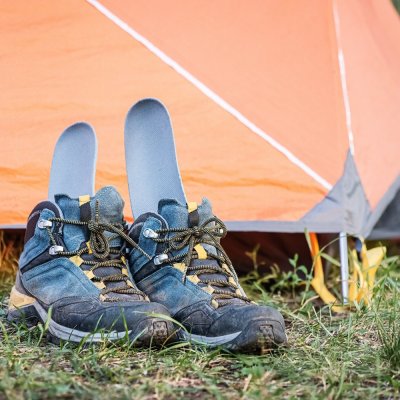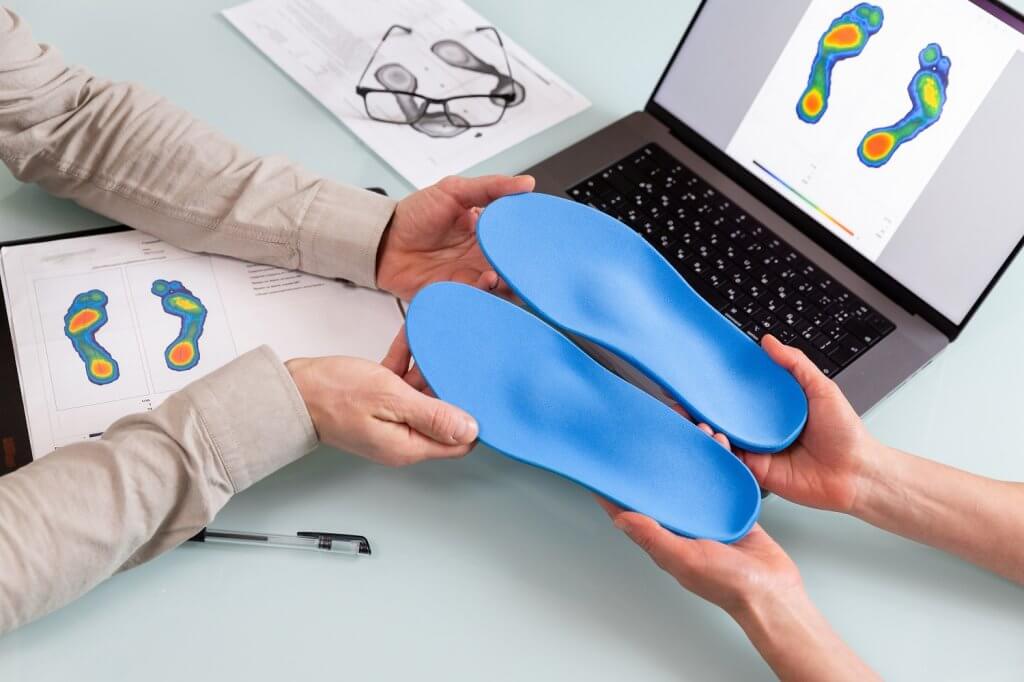Daily Cleaning and Hygiene
Remove your orthotics from your shoes each night to allow them to air dry completely. This prevents moisture buildup that can lead to bacterial growth and unpleasant odors.
Clean your orthotics regularly with mild soap and lukewarm water. Use a soft brush or cloth to gently scrub away any buildup of dirt, sweat, or dead skin. Avoid harsh chemicals, bleach, or abrasive cleaners that could damage the materials.
After cleaning, allow your orthotics to air dry completely before putting them back in your shoes. Never put wet orthotics back in your shoes, as this can damage both the orthotics and your footwear.
For athletes or people who sweat heavily, daily cleaning may be necessary. Consider using antimicrobial sprays designed for foot care products to help control bacteria and odor.
Proper Storage and Handling
When not in use, store your orthotics in a cool, dry place away from direct sunlight and heat sources. Excessive heat can warp or damage certain orthotic materials, particularly those made from thermoplastics.
If you have multiple pairs of shoes that you use with your orthotics, consider getting additional pairs of orthotics rather than constantly transferring them between shoes. While nightly removal is recommended for foot health, excessive handling and repositioning of orthotics during daily wear can cause premature wear and may affect the fit.
Handle your orthotics gently when inserting or removing them from shoes. Forcing them into shoes that are too small or pulling them out roughly can cause damage over time.
Keep your orthotics away from pets, as some animals may be attracted to the scent and could chew or damage them.
Monitoring for Wear and Damage
Regularly inspect your orthotics for signs of wear, damage, or changes in shape. Look for cracks, worn areas, compressed cushioning, or any changes in the original shape or contour.
Pay attention to how your orthotics feel during use. If you notice that areas that were once comfortable are now causing pressure points, or if your original symptoms are returning, it may be time for adjustment or replacement.
Check the bottom surface of your orthotics for wear patterns. Uneven wear might indicate that your gait has changed or that adjustments are needed.
Footwear Considerations
The shoes you wear with your orthotics play a crucial role in their effectiveness and longevity. Make sure your shoes have adequate depth and width to accommodate the orthotics without creating pressure points.
Remove the original insoles from your shoes before inserting your custom orthotics, unless specifically instructed otherwise by your podiatrist. Using both can create fitting problems and reduce the effectiveness of your orthotics.
Rotate between different pairs of shoes when possible to allow each pair to dry out completely between uses. This also reduces wear on both your shoes and orthotics.
Replace worn-out shoes promptly, as worn shoes can negatively affect how your orthotics function and may cause them to wear unevenly.
When to Seek Professional Care
Schedule regular follow-up appointments with your podiatrist, especially during the first few months of orthotic use. These visits allow for adjustments and ensure you’re getting the maximum benefit from your orthotics.
Contact your podiatrist if you experience persistent pain, pressure points, or if your original symptoms return. Often, minor adjustments can resolve these issues quickly.
If your orthotics become damaged or broken, don’t attempt to repair them yourself. Professional repair or replacement is usually necessary to maintain their effectiveness and safety.
Replacement and Maintenance Tips
Your activity level, usage frequency, and the materials used in your orthotics all affect their lifespan. Those who are very active or use their orthotics extensively may need more frequent replacements.
Changes in your foot structure, weight, or medical condition may also necessitate new orthotics even if the current ones aren’t worn out.
Signs it’s time for replacement include compressed cushioning that no longer rebounds, visible wear or damage, return of original symptoms, or changes in your foot structure or needs.
Consider keeping a simple maintenance routine: remove and air dry nightly, clean weekly, and inspect monthly for any changes or damage.
If you have questions about caring for your specific orthotics or notice any changes in how they feel or function, don’t hesitate to contact Proliance Northwest Foot and Ankle Specialists at (425) 337-7000 or request an appointment online. We’re here to help you get the most benefit from your orthotic treatment.








